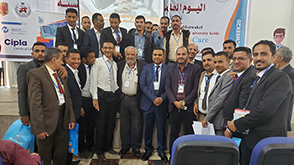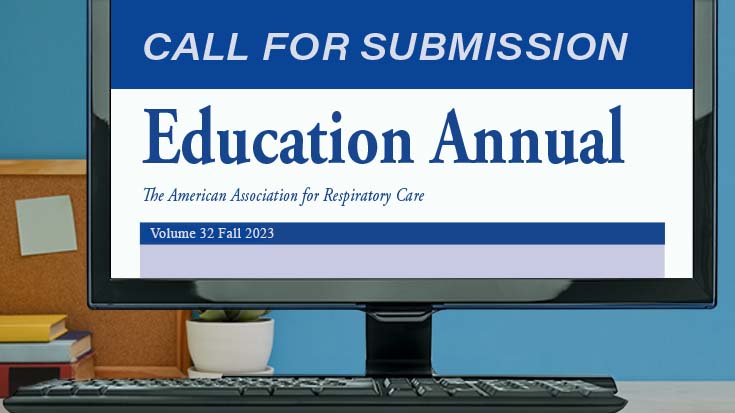
Respiratory Care Around the World: How Yemen is Growing the Profession
For much of its history, the respiratory care profession was primarily a North American phenomenon, with the U.S. and Canada leading the way. But that’s not the case today. Providers worldwide are supporting the profession in their home countries, and Yemen is one great example of how the field is expanding internationally.
Tapping into RC Week
 Attendees gather at the 2020 conference held in conjunction with Respiratory Care Week.
Attendees gather at the 2020 conference held in conjunction with Respiratory Care Week.“The respiratory care community is growing rapidly,” said Saleem N. Hamilah, BS, RCP, director of respiratory care services administration at the Ministry of Health in Yemen. The first RTs began practicing back in 2015, and today their numbers have grown from the initial 57 to 177. “By the end of June 2021, there will be 45 graduated RTs who will be joining the RC community,” he said.
Promoting the profession in Yemen has been a critical goal of its pioneering practitioners. They have focused much of their efforts on ensuring a robust celebration for Respiratory Care Week each fall. Since 2018, they have hosted annual educational events for RTs and other clinicians, and even the pandemic couldn’t slow them down.
“Celebration of RC Week helps us to show the crucial role of respiratory care practitioners, and it supports increased awareness toward our profession,” Hamilah said. “Last year was absolutely a different year and was difficult because of the COVID-19 pandemic that expanded to almost all countries of the world.”
Despite the challenges, they went forward with their 3rd Annual Scientific Day, which included two scientific sessions. The first delved into everything from the progress made by the profession in Yemen, to medical ethics associated with respiratory care, to the latest recommendations regarding COPD, to respiratory care services outside of the hospital, to measuring the knowledge and practices of ICU nurses regarding ventilator weaning and ventilator-associated lung infections.
The second session zeroed in on COVID-19, with presentations on the latest recommendations for treating patients and lectures devoted to how the virus impacts PE, ARDS, and sleep medicine. The session also featured a presentation on a recent online survey aimed at assessing the knowledge, attitudes, anxiety, and preventive behaviors of health care providers in Yemen during COVID-19.
As it does in most places, RC Week also gives Yemeni therapists a chance to honor their own. Last year the Respiratory Therapist of the Year award went to Huda Al-Ahdal for her efforts to establish a department at Palestine Hospital. Dr. Hoda Qashweh was honored for helping to strengthen respiratory care education in the country.
A place at the table
The progress Yemen has made in establishing the profession has not gone unnoticed. The International Council for Respiratory Care (ICRC) recently added the country to its rosters under the “candidate status” designation, with Hamilah serving as governor. He says it’s a goal he’s been working toward since 2017, when he sought advice from former ICRC President Jerome Sullivan, PhD, RRT, FAARC.
“I asked him many questions, and I got great instructions to heading our RC profession forward,” he said.
Those initial discussions have continued with current ICRC President Daniel D. Rowley, MSc, RRT-ACCS, RRT-NPS, RPFT, FAARC. Hamilah says he’s also received much welcomed support from his friend and colleague in Saudi Arabia, Hassan Alorainy, BSrc, RRT, FAARC, who is a member of the ICRC Council Emeritae.
Hamilah says respiratory care is currently the fast-growing health profession in his country. He believes many steps are on the way that will speed that growth and improve respiratory care delivery.
“Absolutely. The tomorrow of respiratory care is never like today,” Hamilah said.
Decoding Asthma
If you are an RT of a certain age, you may remember the “S.K. Povgas” cartoons that appeared for years in RESPIRATORY CARE. The comic was the brainchild of long-time Journal Editor Phil Kittridge, RRT, and it was drawn by James Arthur Allen, EdD, RRT.
Now Dr. Allen is back in the cartoon business, with a new graphic novel aimed at children with asthma. The book “Decoding Asthma” covers everything a young person would need to know to keep their asthma under control, all presented within a plot featuring a young girl named Aurora who has an asthma episode while practicing soccer with her friends. They decide to find out why it happened, and a madcap search for answers ensues that takes the children everywhere from the local library to outer space.
Two Types of Severe Asthma
A new study coming from investigators at the University of Pittsburgh and Stanford University sheds some light on the differences between people who suffer from severe asthma who otherwise appear similar. Using mass cytometry, RNA-sequencing, and machine learning, they established a novel algorithm. This algorithm links immune cells to cellular pathways potentially related to disease pathogenesis.
Results showed lung aspirates from one group of patients were enriched with T cells polarized to fight infections. The other group resulted in having a much lower level of T cells. The second group also had an increased number of innate immune cells expressing the inflammatory molecule IL-4, which is understood to be elevated in asthma.
“We have identified two clusters of severe asthma patients with very similar biomarkers but with strikingly distinct immune profiles and associated biological pathways,” said senior author Anuradha Ray, PhD, professor of medicine and immunology at Pitt. “These findings identify new targets for therapy, which are distinct in the two subgroups of severe asthma patients who otherwise would be indistinguishable based on biomarker profiles.”
The authors note better treatments for severe asthma are sorely needed because while severe asthmatics make up only 5-10% of the asthma population, they account for 50% of the costs of asthma care. The study appeared in Cell Reports.
One COVID-19 ARDS Phenotype Carries Greater Risk
Researchers from Massachusetts General Hospital have found that about one in four people hospitalized with acute respiratory distress syndrome (ARDS) related to COVID-19 have a distinct phenotype that puts them at greater risk for organ dysfunction, blood-clotting abnormalities, and death.
They reached that conclusion after studying 263 patients admitted to their ICUs for respiratory failure linked to COVID-19. Seventy patients, or 26.6%, had higher levels of biomarkers in the blood, suggesting disordered blood clotting, higher inflammation, and more organ dysfunction than the other patients in the study.
These patients had twice the risk of dying, despite seeing few differences between their respiratory mechanics or the severity of their ARDS than those seen in the other patients in the study.
“The motivation for our work is that if we can identify subsets of patients with different biochemical characteristics, and then those patients respond differently to treatment or have different clinical outcomes, we would be one step closer to a more mechanism-based understanding of ARDS,” said study author Sylvia Ranjeva MD, PhD.
The study was published by EClinicalMedicine, an open-access journal of The Lancet group.
E-Cigarette with Cigarette-Like Nicotine Levels Reduces Exposure to Carcinogen
Giving smokers an e-cigarette with the same amount of nicotine as a traditional cigarette may help them smoke fewer traditional cigarettes, find investigators from Penn State College of Medicine and Virginia Commonwealth University (VCU). They found these smokers had lower levels of a tobacco-specific carcinogen called NNAL, despite concurrent smoking.
The study randomized 520 smokers. Participants received an e-cigarette device filled with either 0, 8, or 36 milligrams per milliliter of liquid nicotine or they received a plastic tube shaped like a cigarette that delivered no nicotine or aerosol. The participants underwent urine tests at weeks 0, 4, 12, and 24, with results showing that those using the 36-milligram e-cigarette, similar to a traditional cigarette, had significantly lower levels of NNAL at week 24 than baseline.
“Previous randomized controlled trials examining if e-cigarettes help smokers change their smoking behavior and toxicant exposure have used e-cigarettes with low or unknown nicotine delivery profiles,” said study author Carolina Cobb from VCU. “Our study highlights the importance of characterizing the e-cigarette nicotine delivery profile before conducting a randomized controlled trial.”
The authors believe their results contribute to the ongoing debate on how e-cigarettes may be best used to help people quit smoking.
Email newsroom@aarc.org with questions or comments, we’d love to hear from you.












